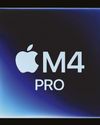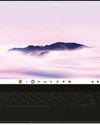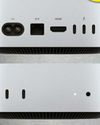My immediate reaction to the Google Pixel 4 was disappointment. While it offers a series of firsts for the Pixel range – two rear cameras rather than one, a Snapdragon 855 processor, a 90Hz screen, even radar-sensing gesture controls – there was still no immediate sense that it had jumped ahead of its rivals.
That’s despite a new design. Google has ditched the two-tone look of its previous three generations of Pixels, instead opting for a simple single-tone colour scheme available in “Just Black”, “Clearly White” and “Oh So Orange”. Each is surrounded by a curved, textured black trim, with a coloured power button and volume rocker on the right edge. There’s no notch, either; instead, the 8MP selfie camera and earpiece speaker are located inside a chunky forehead bezel.
The Pixel 4 is sandwiched between protective layers of Gorilla Glass 5, rated to the IP68 standard. The new rear camera module is distinctly iPhone-like, with the two cameras, infrared sensor and dual-LED flash arranged in a diamond pattern.
The dual front-facing speakers also reappear, and there’s still no 3.5mm headphone jack. This isn’t normally much of a problem, but miserly Google has decided not to include an adapter in the box this year. There’s also no fingerprint sensor, but you can still unlock the Pixel 4 with your face, or with a PIN or pattern lock.
هذه القصة مأخوذة من طبعة January 2020 من PC Pro.
ابدأ النسخة التجريبية المجانية من Magzter GOLD لمدة 7 أيام للوصول إلى آلاف القصص المتميزة المنسقة وأكثر من 9,000 مجلة وصحيفة.
بالفعل مشترك ? تسجيل الدخول
هذه القصة مأخوذة من طبعة January 2020 من PC Pro.
ابدأ النسخة التجريبية المجانية من Magzter GOLD لمدة 7 أيام للوصول إلى آلاف القصص المتميزة المنسقة وأكثر من 9,000 مجلة وصحيفة.
بالفعل مشترك? تسجيل الدخول

Microsoft makes funeral plans for Windows 10
Extended support tariff and nag screens are ready for the October deadline

Are delivery drones finally ready for take-off?
More than a decade in the making, Amazon is again set to run a trial of its delivery drone in the UK. But there are better uses for delivery drones, explains Nicole Kobie

Sony PlayStation: the game changer
David Crookes looks at how the first PlayStation turned the gaming world on its head, impacting rival console manufacturers, videogame developers and the perception of games themselves

Apple M4 series
Don't expect revolution, but this is a notable all-round upgrade in performance for all members of the series

What is NUI?
Forget cryptic buttons and fiddly menus-Steve Cassidy explores a more intuitive approach to user interactions

Samsung Galaxy Chromebook Plus (2024)
Sleek, stylish and packing a superb OLED panel, this is the best high-end Chromebook since the Pixelbook

How can I make my IT truly sustainable?
It's not just about setting computers to sleep overnight; Nik Rawlinson finds out how to minimise your overall environmental impact

Apple Mac mini M4
Half the size of its predecessor yet packing far more power, this is the biggest Mac upgrade of the year

UPGRADE TO BUSINESSCLASS WI-FI
A HOME OFFICE DESERVES A PROFESSIONAL NETWORK. DARIEN GRAHAM-SMITH MAKES THE SWITCH

GIFTS FOR GEEKS 2024
IN OUR ANNUAL-ROUNDUP OF GIFT IDEAS FOR PEOPLE IMPOSSIBLE TO BUY FOR, WE COVER EVERYTHING FROM CHESS SETS TO PORTABLE BLUETOOTH TURNTABLES